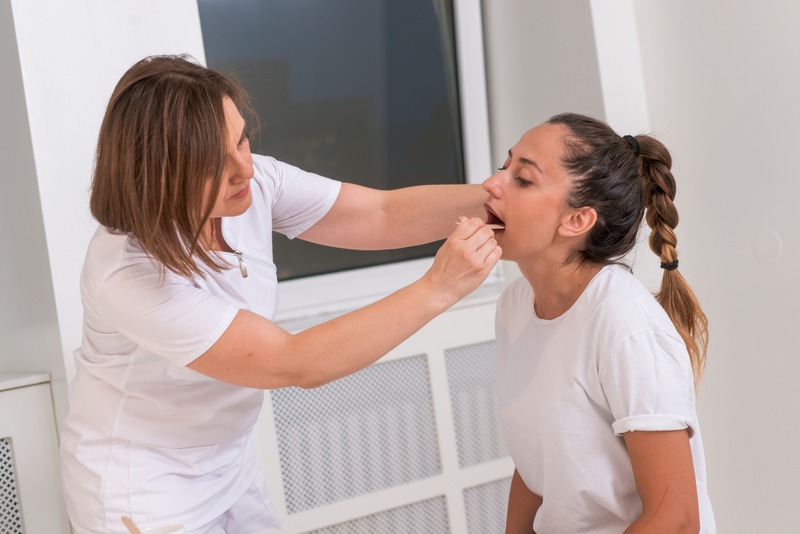
What Is Oral Myofunctional Therapy and Who Needs It?
Oral myofunctional therapy might sound like a mouthful, but it’s actually a fascinating field dedicated to improving oral and facial functions. From breathing and swallowing to speech and facial symmetry, oral myofunctional therapy aims to correct a range of issues that can arise in both children and adults. Whether you’re just curious or think this therapy could be beneficial for you or a family member, let’s explore what it entails and who might benefit from it.
Oral Myofunctional Therapy
Oral myofunctional therapy focuses on the muscles of the face, mouth, and tongue. This therapeutic approach works to retrain these muscles to function properly, enhancing everyday activities like eating, speaking, and breathing. The therapy typically involves a set of exercises specifically designed to correct or improve oral motor skills and the alignment of the jaw and teeth.
Key Components
-
Exercises designed to improve tongue posture
-
Strengthening exercises for oral muscles
-
Breathing techniques to enhance airflow
-
Posture exercises for facial symmetry
Who Can Benefit from the Therapy?
Oral myofunctional therapy is versatile and can benefit various groups of people. It’s not limited to children, although many kids use it to address developmental issues. Here’s a closer look at who might gain the most from these sessions.
Children
Children often undergo this therapy to correct habits like thumb sucking or to address speech impediments. It’s also effective in treating breathing problems linked to improper tongue posture.
Adults
For adults, this therapy can alleviate complications related to TMJ disorders or sleep apnea. Many adults also find it helpful for improving speech clarity or addressing ongoing dental issues.
Why Is Oral Myofunctional Therapy Important?
This therapy can profoundly impact one’s overall quality of life. Improving the functionality of facial muscles addresses numerous potential challenges.
Breathing and Sleep
Improper tongue posture and oral habits can lead to breathing difficulties, affecting sleep quality and leading to conditions like sleep apnea. The therapy helps ensure that the airway remains open during sleep by adjusting tongue posture.
Speech Improvement
Many speech disorders are linked to poor muscle function around the mouth. Oral myofunctional therapy can enhance the clarity and fluency of speech by strengthening these muscles.
Enhanced Facial Aesthetics
Properly aligned facial muscles and posture can improve facial appearance and prevent asymmetries from developing over time.
The Therapy Process
The journey usually begins with an initial assessment by a qualified therapist. They evaluate various aspects of oral and facial function, then develop a personalized treatment plan. Here’s how it typically unfolds:
Initial Evaluation
-
Assessment of oral posture and muscle function
-
Review of medical and dental history
-
Discussion about habits and concerns
Customized Treatment Plan
A treatment plan is crafted based on the evaluation. The therapist provides exercises and techniques tailored to the individual’s needs, aiming for gradual improvement over several weeks or months.
Where to Find Oral Myofunctional Therapy
If you’re considering this therapy, it’s essential to seek qualified professionals. Clinics offering oral myofunctional therapy in Albuquerque provide specialized services to address a range of oral and facial challenges. By working with trained therapists, you can ensure that the exercises are performed correctly for maximum benefit.
What to Expect in a Session
Sessions are generally straightforward and involve guided exercises. The therapist will demonstrate how to perform each exercise and provide feedback, ensuring that you’re engaging the muscles correctly. Regular practice is crucial, so expect to continue exercises at home as part of the routine.
Potential Challenges and Solutions
Like any therapy, oral myofunctional therapy requires commitment. Here are a few challenges some might face, along with suggestions to overcome them.
Consistency
Practicing exercises consistently is essential for success. Setting a daily routine and reminders can help you stay on track and see improvements more quickly.
Patience
Results may not be immediate. Patience is key, as muscle retraining can take time. Regular communication with your therapist can help keep you motivated.
If you’re considering therapy, talking to specialists and collaborating with professionals, such as Essenmacher Family Dental can provide a comprehensive approach to your care. Remember, the journey may be gradual, but the benefits can be substantial.
Integrating with Other Treatments
Oral myofunctional therapy often complements other treatments. For instance, pediatric dental specialists in Albuquerque may recommend this therapy alongside orthodontic work to ensure comprehensive care and long-term success.
Additionally, collaboration among different health care providers can enhance outcomes. Your therapist may work with your dentist or speech therapist to address all facets of the problem.
Final Thoughts
Oral myofunctional therapy is essential for enhancing facial and oral function. Suitable for both children and adults, it targets muscle strength and posture to improve overall well-being. A personalized therapy plan can help tackle issues like breathing difficulties, speech challenges, and aesthetic problems. Focusing on the correct function of the tongue and facial muscles promotes better oral habits and can even lead to improvements in sleep, swallowing, and communication. Embracing this therapy can significantly boost one’s quality of life by addressing underlying functional concerns.